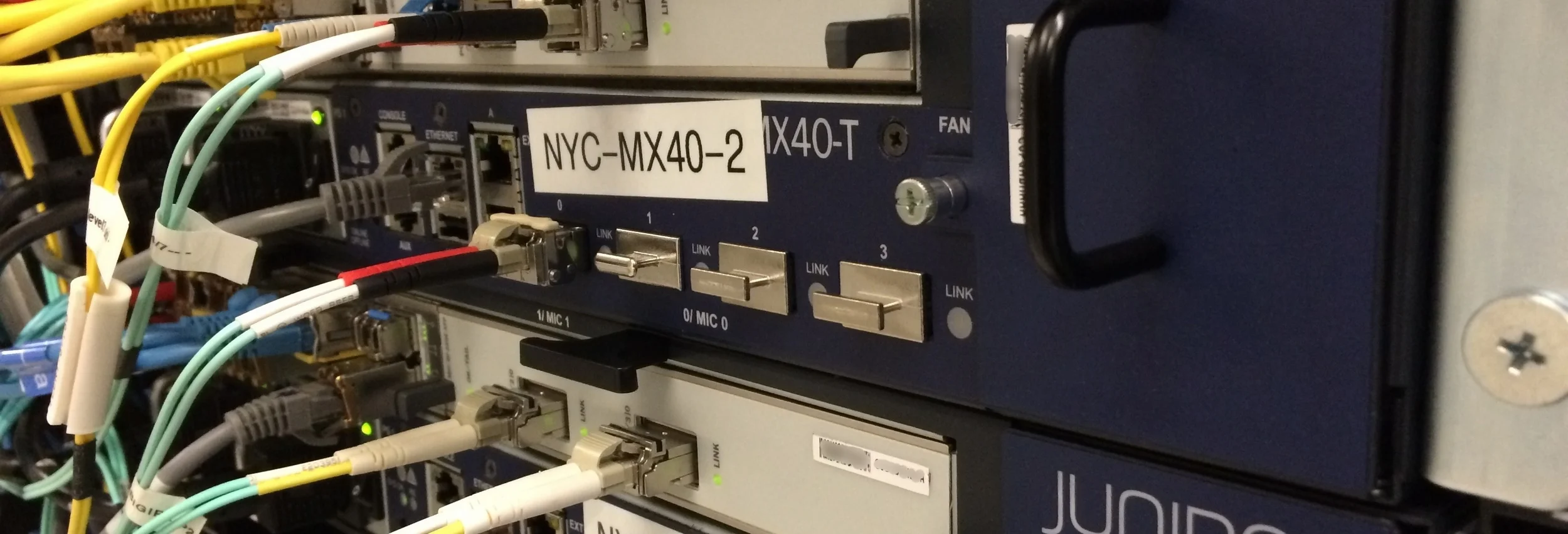SRX cluster initial setup:
1. Power on both SRX units. Console to the first one.
2. Enable cluster mode and reboot the devices:
On device A: >set chassis cluster cluster-id 1 node 0 reboot
On device B: >set chassis cluster cluster-id 1 node 1 reboot
3. Remove default configuration:
root> configure shared
delete interfaces
delete system services dhcp
delete security nat
delete protocols stp
set protocols rstp
delete security policies
delete security zones
delete vlans
4. Configure authentication and ssh access on each device:
root# set system root-authentication plain-text-password
root# set system services ssh root-login allow
5. Configure the device specific configurations such as host names and management IP addresses. This is specific to each device and is the only part of the configuration that is unique to its specific node. This is done by entering the following commands (all on the primary node):
on Node0:
root# set groups node0 system host-name nyc-broadway-451-0
root# set groups node0 interfaces fxp0 unit 0 family inet address 172.25.25.1/24
set apply-groups "${node0}"
on Node1:
root# set groups node1 system host-name nyc-broadway-451-1
root# set groups node1 interfaces fxp0 unit 0 family inet address 172.25.25.2/24
set apply-groups "${node1}"
The 'set apply-groups' command is run so that the individual configs for each node, set by the above commands, are applied only to that node. This command is required.
6. Configure the FAB links (data plane links for RTO sync, etc):
set interfaces fab0 fabric-options member-interfaces ge-0/0/2
set interfaces fab0 fabric-options member-interfaces ge-0/0/3
set interfaces fab1 fabric-options member-interfaces ge-5/0/2
set interfaces fab1 fabric-options member-interfaces ge-5/0/3
7. Configure the Redundancy Group 0 for the Routing Engine failover properties. Also configure Redundancy Group 1 (all the interfaces will be in one Redundancy Group in this example) to define the failover properties for the Reth interfaces.
set chassis cluster reth-count 3
set chassis cluster redundancy-group 0 node 0 priority 100
set chassis cluster redundancy-group 0 node 1 priority 1
set chassis cluster redundancy-group 1 node 0 priority 100
set chassis cluster redundancy-group 1 node 1 priority 1
-configure switch fabric
set interfaces swfab0 fabric-options member-interfaces ge-0/0/4
set interfaces swfab1 fabric-options member-interfaces ge-5/0/4
8. Configure interfaces
set interfaces ge-0/0/15 gigether-options redundant-parent reth0
set interfaces ge-5/0/15 gigether-options redundant-parent reth0
